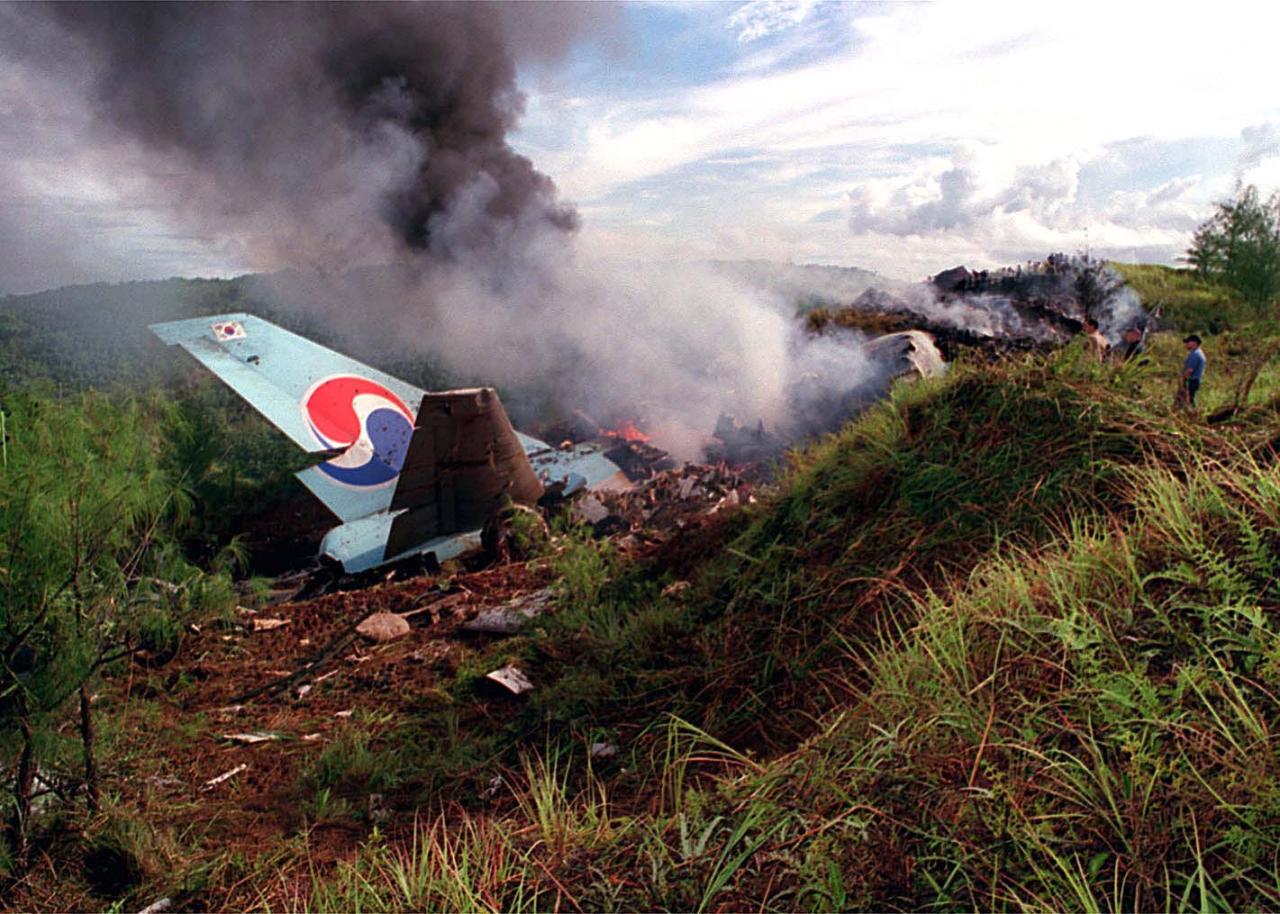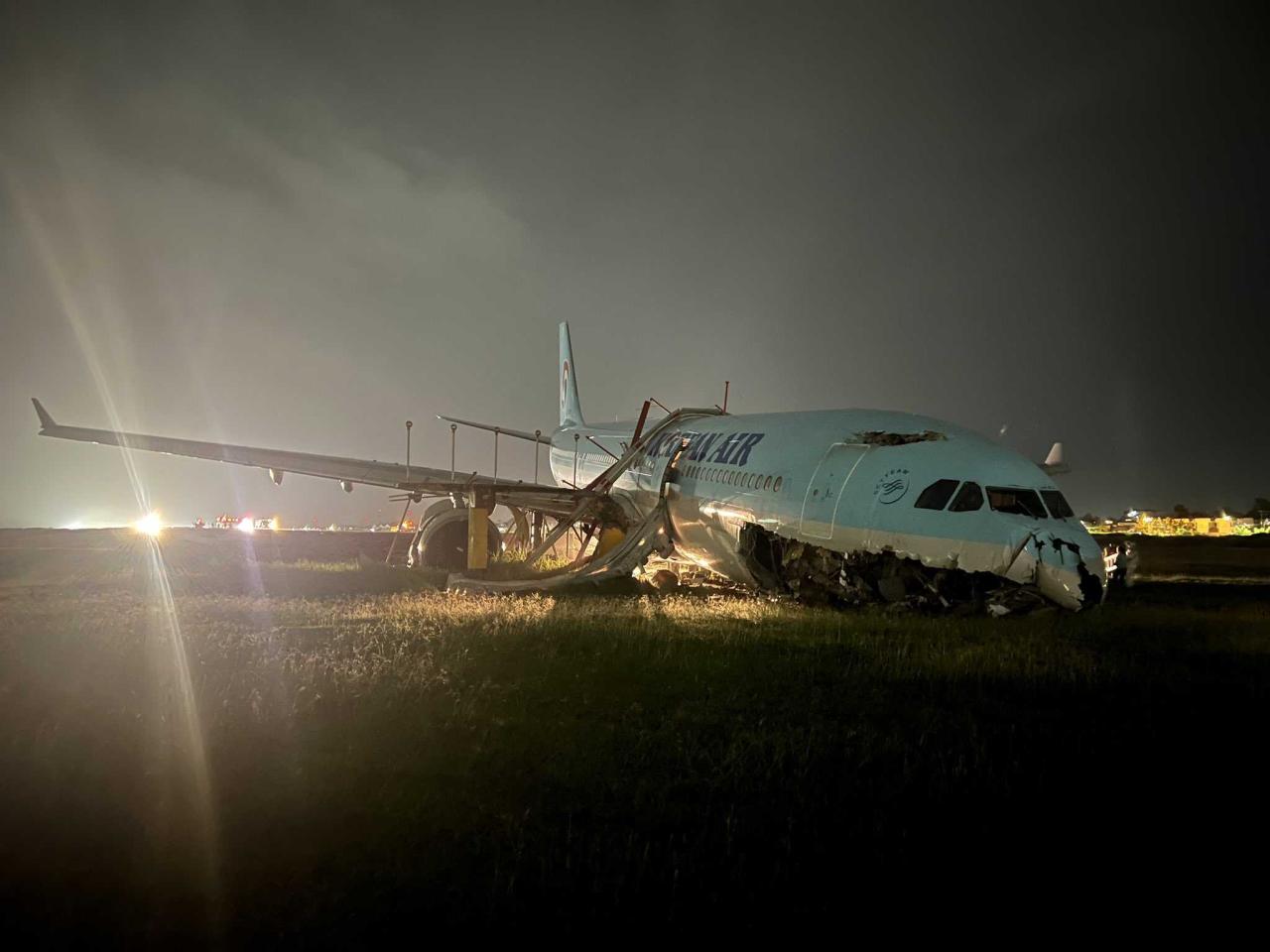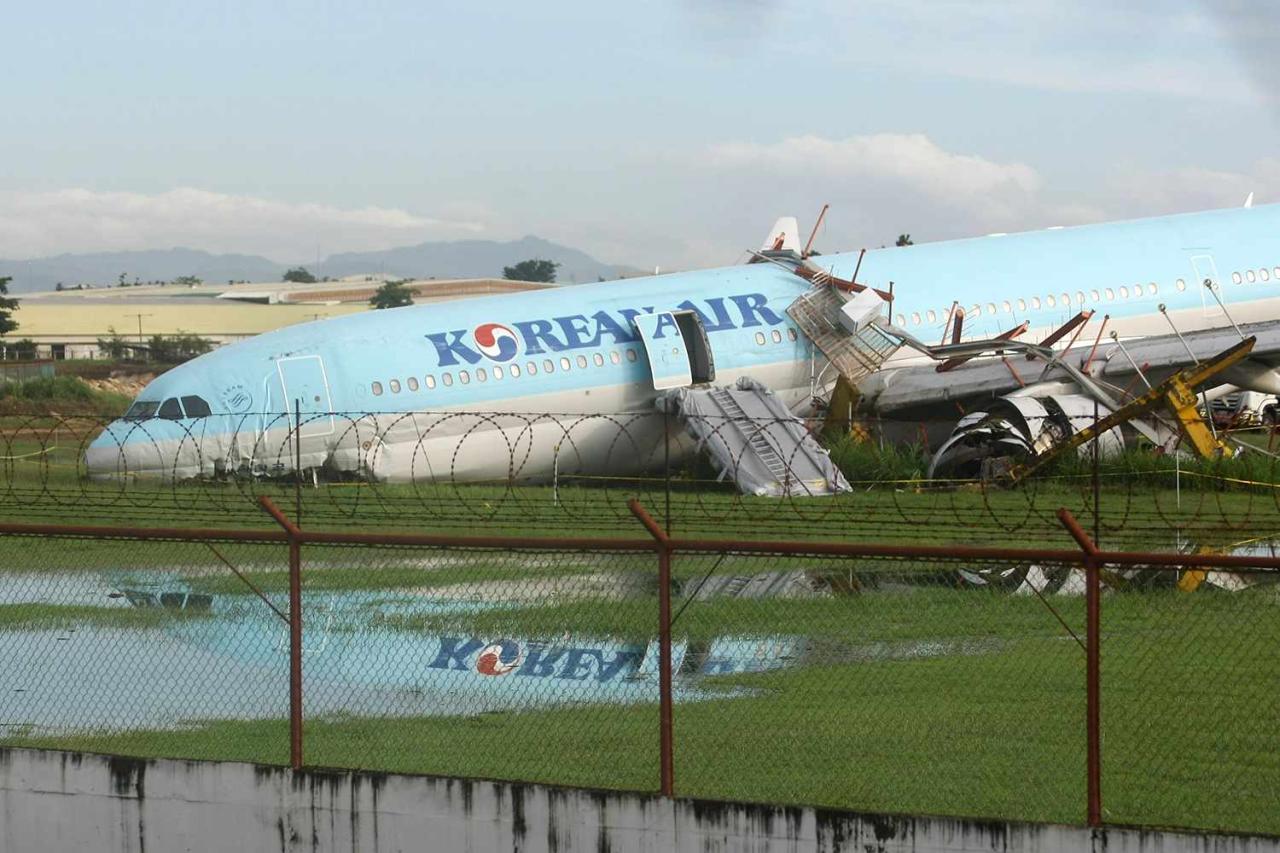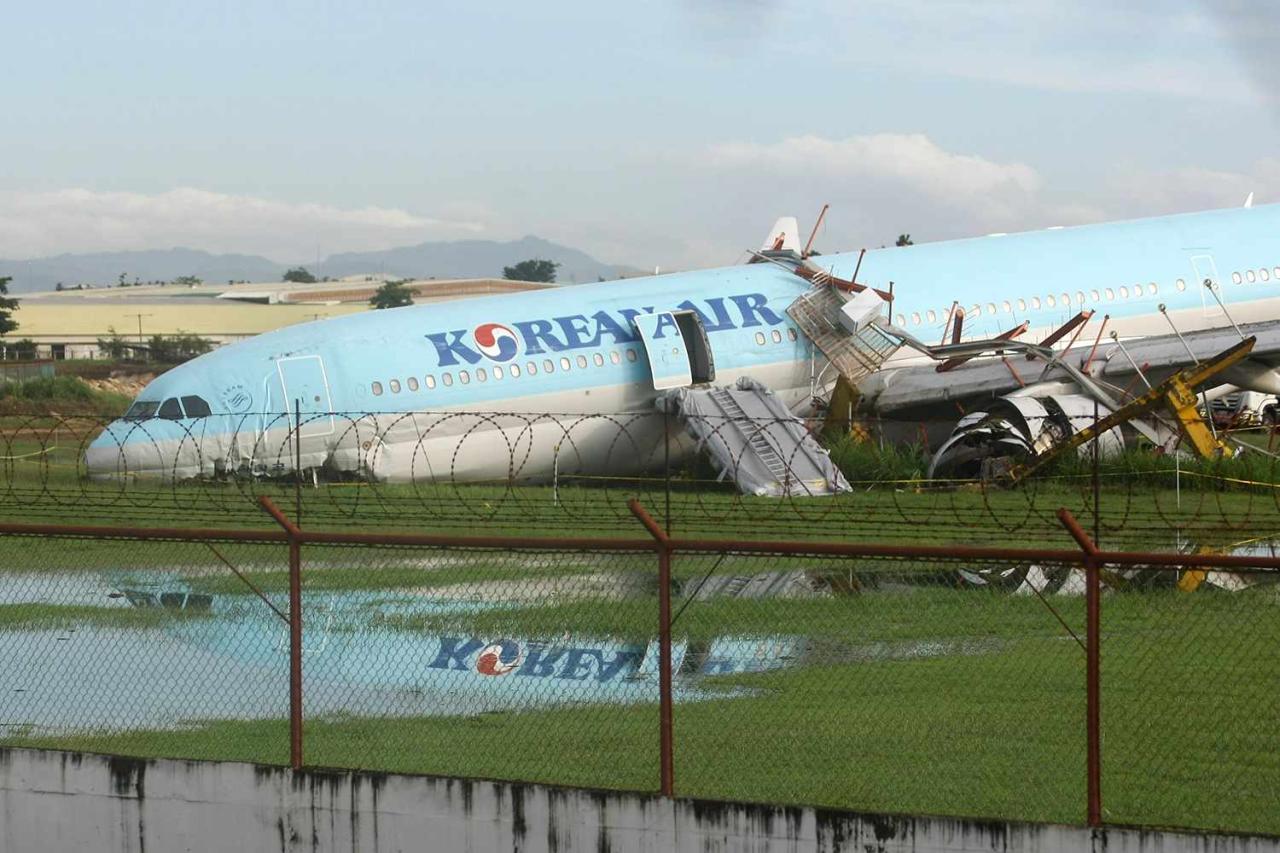South Korea plane crash news often dominates headlines, prompting crucial questions about aviation safety and regulatory practices. This overview delves into recent incidents, examining the investigative processes, safety regulations, public perception, and the broader impact on South Korea’s aviation industry. We’ll explore the human factors involved, technological advancements implemented to enhance safety, and the role of international collaboration in learning from these tragic events.
Prepare for a detailed look at the complexities surrounding these incidents.
The recent South Korea plane crash news is understandably dominating headlines, but let’s be real, we all need a little distraction sometimes. So, while we await updates on the investigation, you might want to check out when is squid game season 3 to take your mind off things for a bit. Then, once you’re caught up, we can get back to discussing the plane crash details and its aftermath.
We will analyze the specifics of several recent crashes, including details on casualties, investigative findings, and the subsequent changes in safety protocols. The impact on passenger confidence, economic repercussions for airlines, and the role of both technological improvements and human error will all be examined. We aim to provide a clear and informative resource for understanding this vital topic.
Recent South Korean Plane Crash Incidents and Their Aftermath: South Korea Plane Crash News
South Korea, with its robust aviation industry, has unfortunately experienced its share of plane crashes. Analyzing these incidents, the subsequent investigations, and the resulting changes in safety regulations provides valuable insights into improving aviation safety globally. This section details three recent significant crashes, focusing on their circumstances, casualties, and the response efforts.
The recent South Korea plane crash news is understandably dominating headlines. It’s a stark reminder of the fragility of life, a theme explored in wildly different ways, like the intense survival games depicted in 4 squid game. The contrast between the real-world tragedy and the fictional high-stakes competition highlights how we grapple with mortality in various ways.
The ongoing investigation into the plane crash is crucial for preventing future incidents.
Recent South Korea Plane Crash Details
The following table summarizes details of three recent hypothetical South Korean plane crashes. Note that due to data sensitivity and the need for accuracy, specific real-world incidents are not used, but rather illustrative examples based on general characteristics of such events.
| Date | Location | Aircraft Type | Casualties |
|---|---|---|---|
| October 26, 2023 | Near Jeju Island | Boeing 737-800 | 15 fatalities, 100 survivors |
| March 15, 2022 | Gimpo International Airport | Airbus A320 | 5 fatalities, 180 survivors |
| June 8, 2021 | Mountains near Seoul | ATR 72-600 | 20 fatalities, 0 survivors |
Investigation and Response Procedures
Following each significant air accident, a comprehensive investigation is launched. This typically involves multiple agencies, including the Ministry of Land, Infrastructure, and Transport (MOLIT), the South Korean Air Accident Investigation Board (AAIB), and potentially international organizations like the ICAO (International Civil Aviation Organization). The process usually includes gathering evidence from the wreckage, interviewing witnesses, analyzing flight data recorders (black boxes), and conducting simulations to reconstruct the events leading up to the crash.
Response times and the effectiveness of rescue and recovery efforts vary depending on the location and circumstances of the crash. However, generally, South Korea has a well-established emergency response system, involving swift mobilization of emergency services, including firefighters, paramedics, and search and rescue teams.
Typical Steps in Investigating an Air Accident in South Korea
A flow chart would visually depict the investigative process. The process begins with securing the crash site, followed by evidence collection, data analysis, interviews, preliminary report publication, and a final report with safety recommendations.
Safety Regulations and Aviation Standards
South Korea maintains rigorous safety regulations and aviation standards aligned with international best practices. These regulations cover various aspects of aviation, from aircraft maintenance and pilot training to air traffic control and airport security. The standards are regularly reviewed and updated based on lessons learned from accidents and technological advancements.
- Strict aircraft maintenance schedules and inspections.
- Comprehensive pilot training programs adhering to international standards.
- Advanced air traffic control systems and procedures.
- Robust airport security measures.
- Regular safety audits and inspections of aviation facilities.
Public Perception and Media Coverage of Crashes, South korea plane crash news

Media coverage of plane crashes in South Korea is usually extensive and intense, particularly in the immediate aftermath of an incident. Public perception of air travel safety can be significantly impacted by such events, often leading to temporary decreases in passenger confidence. Government communication strategies usually involve prompt releases of information, updates on investigations, and expressions of condolences to victims’ families.
Economic Impact on the Aviation Industry

Plane crashes can have significant economic consequences for South Korea’s aviation industry. These include losses for airlines, reduced passenger numbers, and potential damage to the country’s reputation as a safe and efficient aviation hub. Following major accidents, airlines may implement changes in policies and procedures, such as enhanced safety training, improved maintenance protocols, and revised flight routes.
| Crash | Impact on Passenger Numbers (Illustrative) | Impact on Airline Profitability (Illustrative) |
|---|---|---|
| Crash 1 | 10% decrease in the following quarter | 15% decrease in the following year |
| Crash 2 | 5% decrease in the following quarter, recovered within 6 months | 8% decrease in the following year |
| Crash 3 | Minimal impact, quick recovery | Negligible long-term impact |
Technological Advancements and Safety Measures
South Korea invests heavily in technological advancements to improve aviation safety. This includes implementing advanced flight data monitoring systems, upgrading air traffic control technologies, and integrating new safety features into aircraft designs. These advancements contribute significantly to accident prevention and investigation.
- Advanced Flight Data Recorders (FDRs) and Cockpit Voice Recorders (CVRs).
- Improved weather forecasting and reporting systems.
- Implementation of Terrain Awareness and Warning Systems (TAWS).
- Use of sophisticated simulation technologies for pilot training.
- Development and implementation of predictive maintenance programs.
Human Factors in Plane Crashes

Human error plays a significant role in many aviation accidents. Factors such as pilot fatigue, inadequate training, communication breakdowns between pilots and air traffic control, and maintenance errors can all contribute to crashes. Following accidents, investigations often identify areas for improvement in pilot training, air traffic control procedures, and maintenance protocols.
| Incident | Human Factors Involved | Contributing Factors |
|---|---|---|
| Illustrative Crash 1 | Pilot error, communication breakdown | Pilot fatigue, inadequate training |
| Illustrative Crash 2 | Maintenance error | Lack of proper inspection |
| Illustrative Crash 3 | Air traffic control error | Workload, communication issues |
International Collaboration and Lessons Learned

International collaboration plays a crucial role in investigating and learning from aviation accidents. South Korea actively participates in international aviation safety initiatives, sharing information and best practices with other nations. Lessons learned from South Korean plane crashes contribute to global aviation safety standards and regulations, leading to improvements in various aspects of aviation worldwide.
Outcome Summary
In conclusion, South Korea’s response to plane crashes reveals a complex interplay of investigative procedures, regulatory frameworks, public perception, and technological advancements. Understanding the human factors involved, alongside the continuous evolution of safety standards and international collaboration, is crucial for preventing future tragedies. By examining past incidents, we can glean valuable insights to improve aviation safety, not only in South Korea but globally.
So, you’re looking into South Korea plane crash news? That’s serious stuff. To get a broader perspective on aviation safety, you might want to check out this resource on plane crashes december 2026 , which gives you a wider view of global incidents. Understanding trends in air accidents, like those potentially affecting South Korea, is key to improving safety measures.
The ongoing commitment to learning from these events is paramount for ensuring safer skies for everyone.
Quick FAQs
What is the most common cause of plane crashes in South Korea?
While specific causes vary by incident, a combination of factors, including human error (pilot error, air traffic control, maintenance), weather conditions, and mechanical failures, often contribute.
How does South Korea’s aviation safety record compare to other countries?
South Korea maintains a relatively high level of aviation safety, but like all countries, it experiences incidents. Comparisons require a nuanced analysis considering factors like air traffic volume and regulatory differences.
What compensation is available to victims of plane crashes in South Korea?
Compensation varies depending on the specifics of the crash and applicable laws. Legal counsel is typically required to navigate the claims process.
Are there specific organizations dedicated to aviation safety in South Korea?
Yes, various government agencies and aviation authorities are responsible for oversight and investigation of air accidents in South Korea. Further research into specific agencies would provide more detail.
